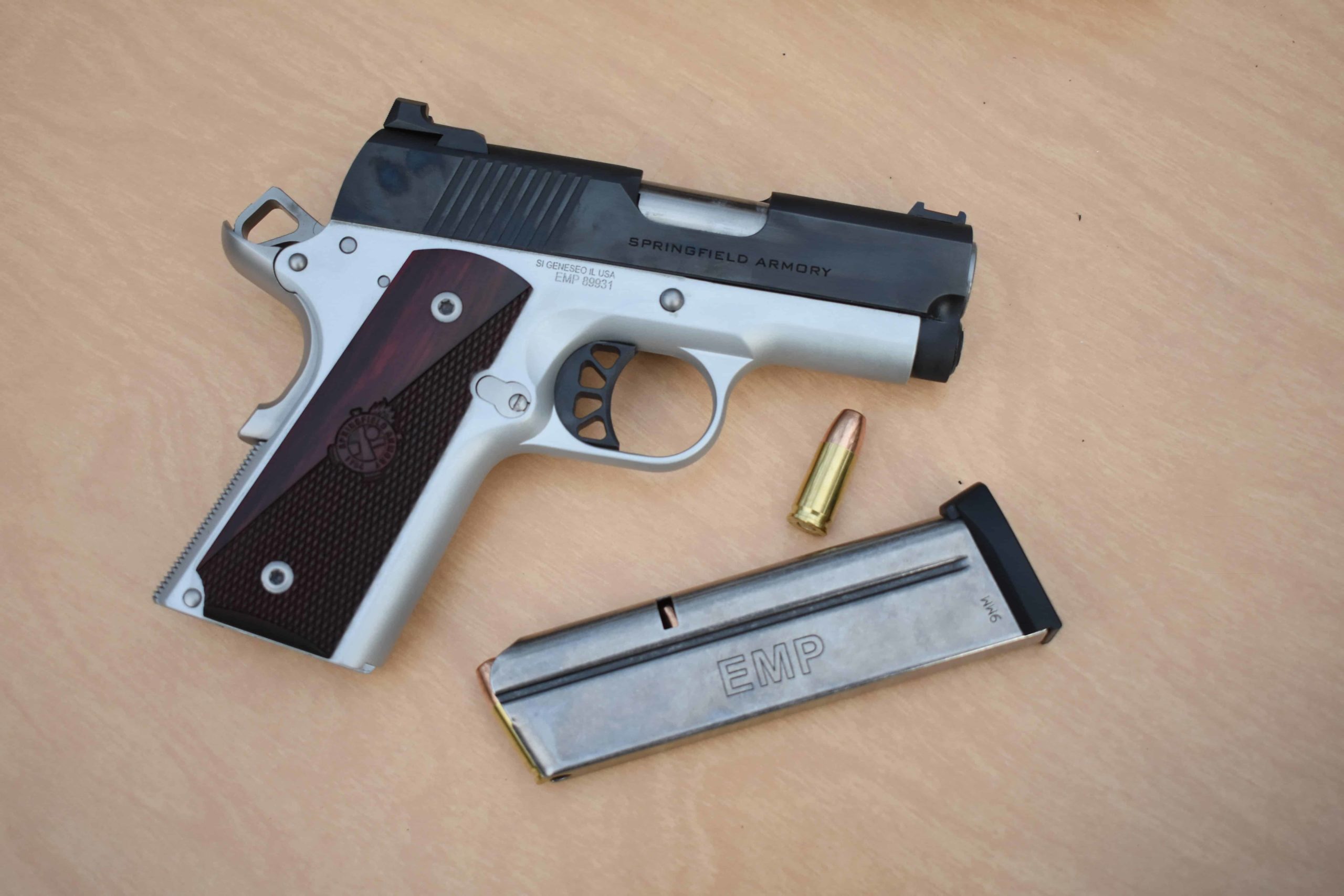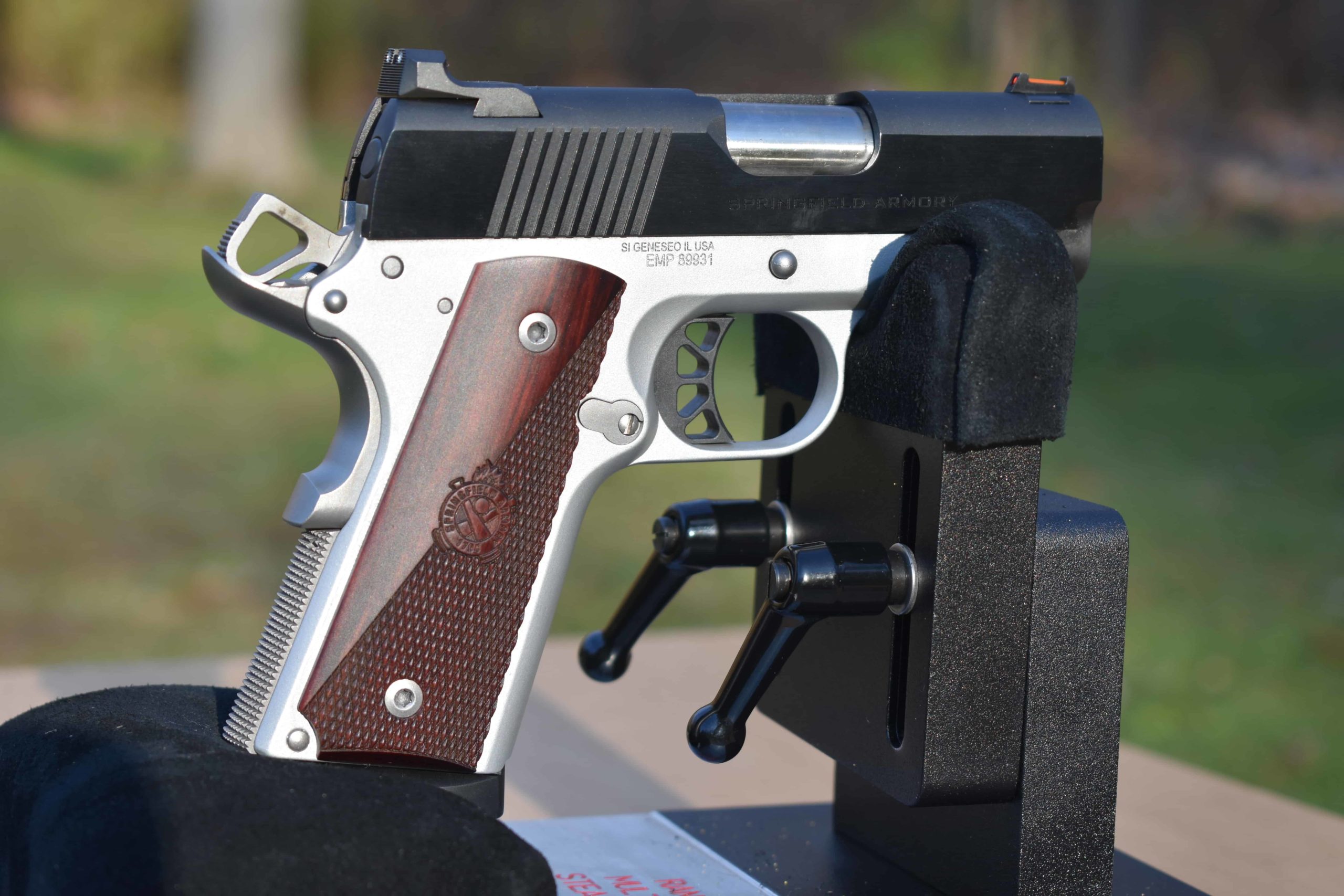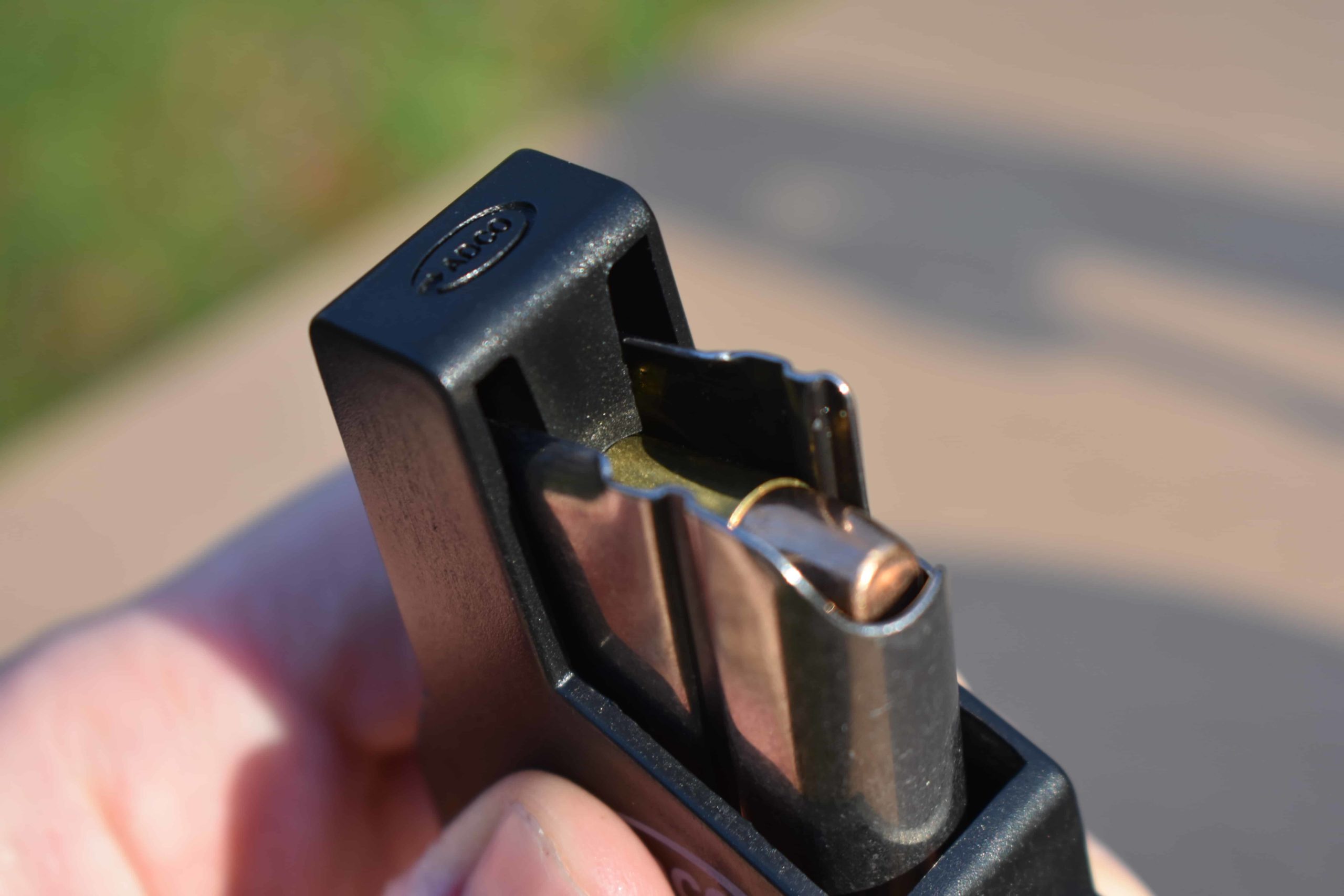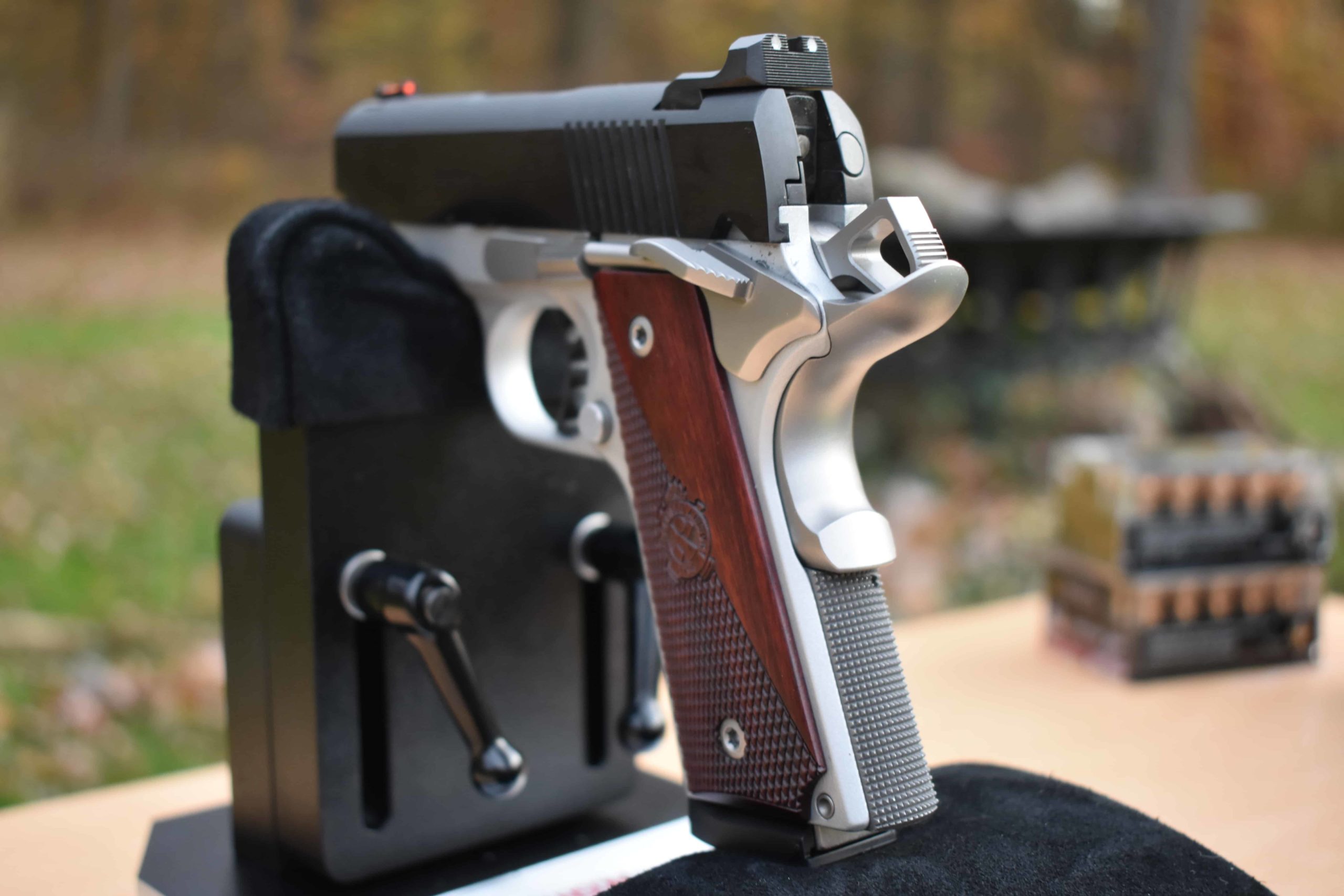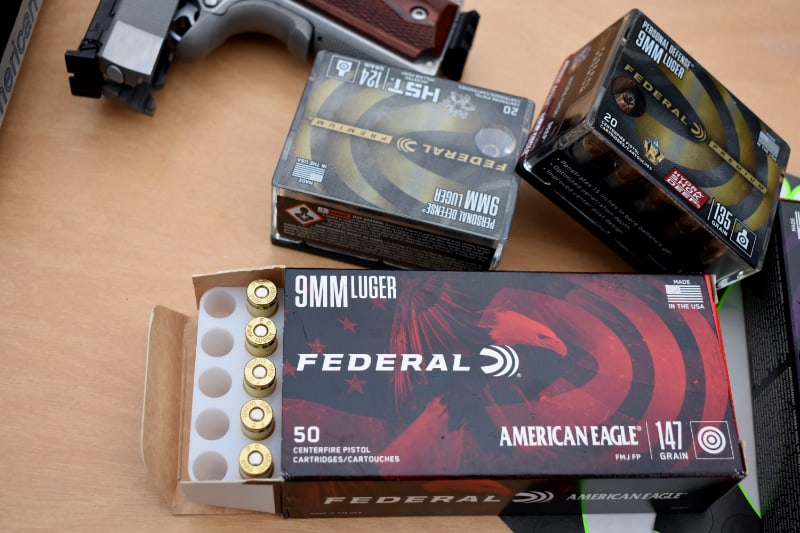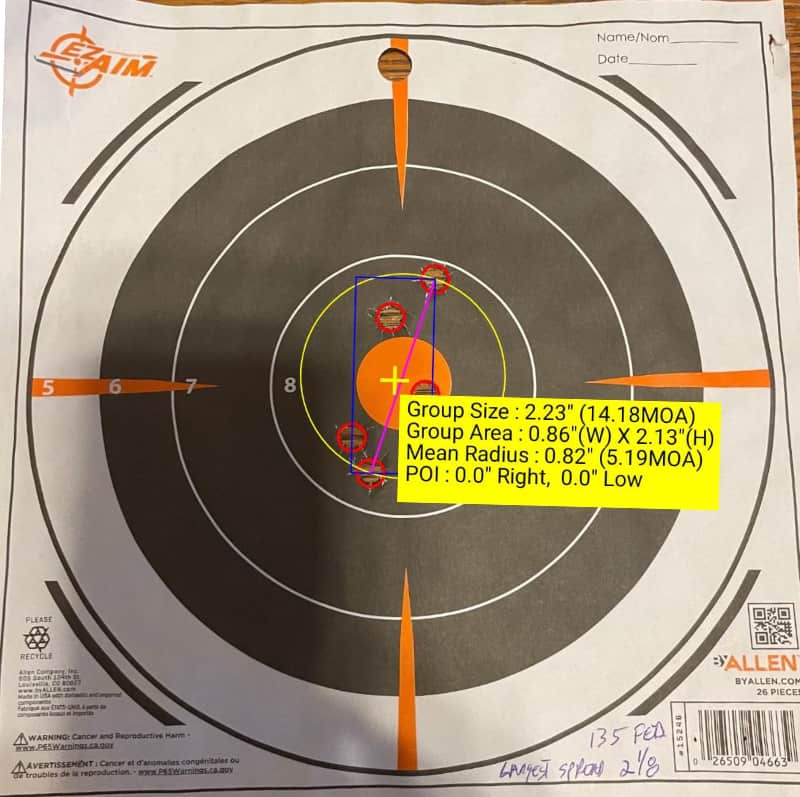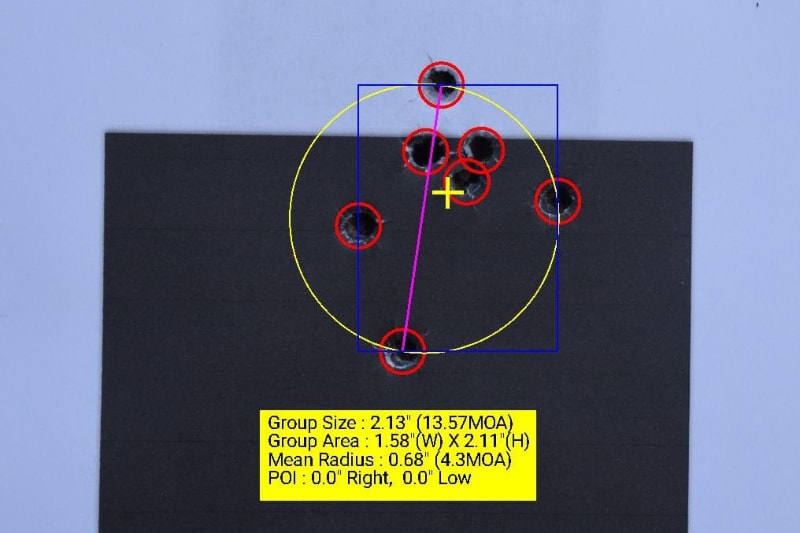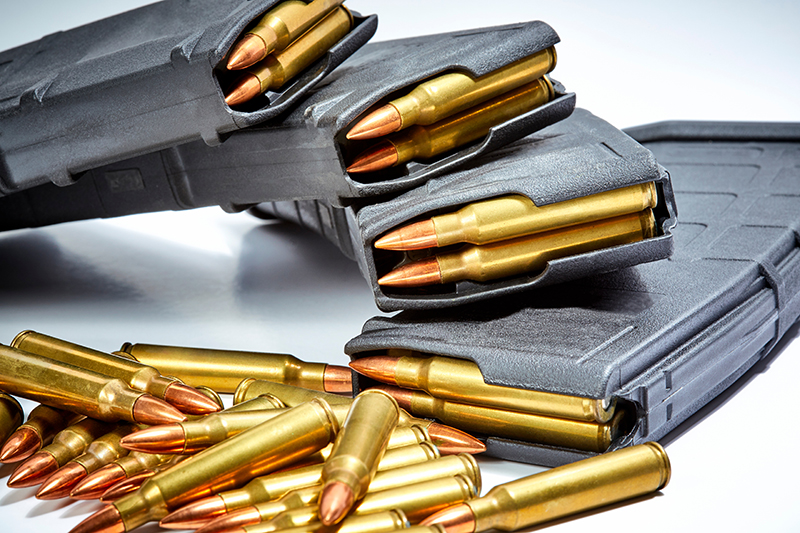Springfield Armory 1911 Ronin EMP 9mm Compact Carry Handgun
DESIGNED FOR CONCEALED CARRY
Ever love something so much you wish you could have more than one with just minor variations? Your favorite baseball cap that fits just right, but in different colors. Clothes are an even better example. Find a shirt that fits and looks good? Better stock up. Endless companies have hopped on board with the idea of taking something popular and extending it into other areas. Pumpkin spice and sugar cookie are great holiday examples. Not only can you purchase pumpkin pie, but pumpkin spice flavored-coffee, scented candles, pinecones, etc. I wouldn’t be surprised if there’s a perfume or cologne released soon – if it doesn’t exist already.
Springfield Armory has taken their 1911 Ronin series and added to the family – just in time for the holidays. New is the 1911 Ronin Enhanced Micro Pistol (EMP) in 9mm – available in 3″ and 4″ models.
First Thoughts
I’ve fallen into the same trap described above. My go-to carry gun is a 1911-style .380 acp and it’s tiny. It has a relatively small capacity (7 with an extended magazine) but is easily concealable, lightweight and attractive. Over the past year I’ve found myself thinking more and more about moving up to a 9mm. Something with greater capacity but the same style and concealability. Enter the Ronin EMP 3″. Though larger and a tad heavier than my existing carry gun, it immediately stole some of my affection.
First off, it’s beautiful. The point of a carry gun isn’t to be seen, but I still appreciate the satin silver Cerakote frame, hybrid checkered wood grips and blued slide. More importantly, it handles nicely. My hands wrapped neatly around the 24-ounce pistol as if they had always done so. The familiar feel of a 1911 combined with hybrid checkered/smooth grips and a reduced size frame contributed to this feeling. Unlike other compact 1911 pistols, the EMP shortens the pistol frame, not just the barrel and slide, making for a reduced grip circumference.
Trigger and Feeding
This single-action carry pistol sports a trigger with a crisp break and a predictable amount of take-up. A safety on the left side of the gun is easily moved with your thumb, but will only engage when the hammer is back, keeping the trigger from moving past the slack. To my great relief, there is no magazine safety, allowing you to fire with one in the chamber while switching magazines in a defense situation. They fall free with the press of the release and assistance of gravity. There is no need to yank or pull. Magazine capacity is 9 +1. Eight rounds slid in easily. I personally needed an ADCO Super Thumb to squeeze in the ninth round. My test model had no issues when firing through a full magazine with one in the chamber with most ammunition.
Testing
Moving on to physical testing, I cycled several types of ammunition through the pistol off a rest at 15 yards. The 3” has a forged stainless-steel match grade bull barrel, 1:16 twist. The sights were refreshingly intuitive: a red fiber optic front and tactical rack white dot rear. The fiber optic was especially visible in low light conditions.
Both Federal 135 gr. Hydra-Shok Deep HP personal defense rounds and American Eagle 147 gr. FMJ FP performed well. Five shots of Hydra-Shok 135 gr. grouped just barely over 2″ while seven shots of the American Eagle FMJ grouped at 2.13.” I suspect the gun would be even more accurate excluding human error entirely. Brass ejected consistently every time, landing in the same area with no cracks in the cases and no flattened primers.
Other Aesthetics and Field Stripping
The slide is fit tightly with only a slight bit of wobble. The muzzle is flat “cut” with no crown bevel. There isn’t any lateral wobble in the trigger or hammer. Field stripping is a little different than for a typical 1911. Due to the compact size of the Ronin EMP, you have to take extra care not to send the dual recoil spring soaring across the room. Included with the pistol are two small tools to make this process easier, though they are not necessary. A small clip holds the barrel bushing and the dual spring assembly together during disassembly. The barrel has a small rotating pin that must be pushed down for removal and up after re-installation. Rather than pulling the barrel out, the Ronin EMP barrel slides forward and through the muzzle as with any standard 1911 pistol. Though a tad tricky at first, it is easy to get used to after a few tries.
Conclusion
At $849, the Ronin EMP 3″ pairs with the rest of the Ronin family price-point. The 4″ model retails for the same, though it has several key differences. The 4″ has a 10 + 1 capacity and weighs 27.5 ounces. It’s also slightly larger than the 3″. Overall, this is a reliable and accurate carry pistol branching off a popular and established family tree at an affordable price point.

